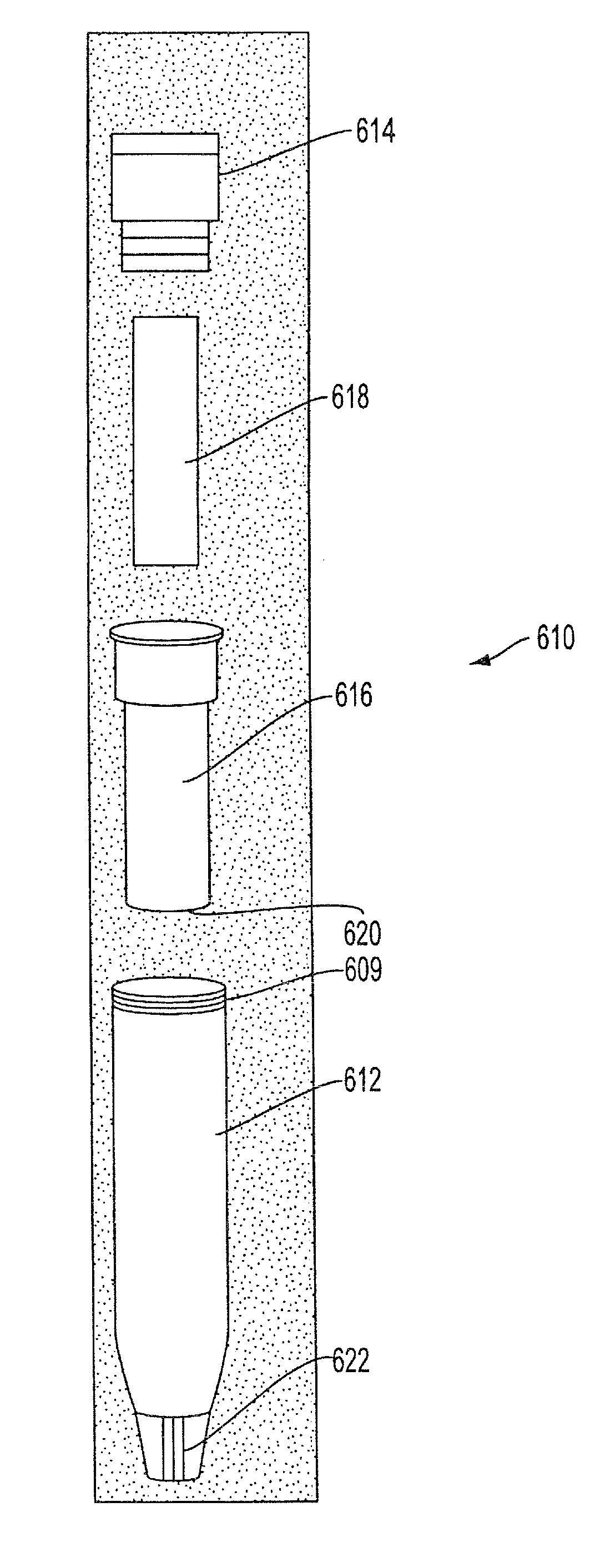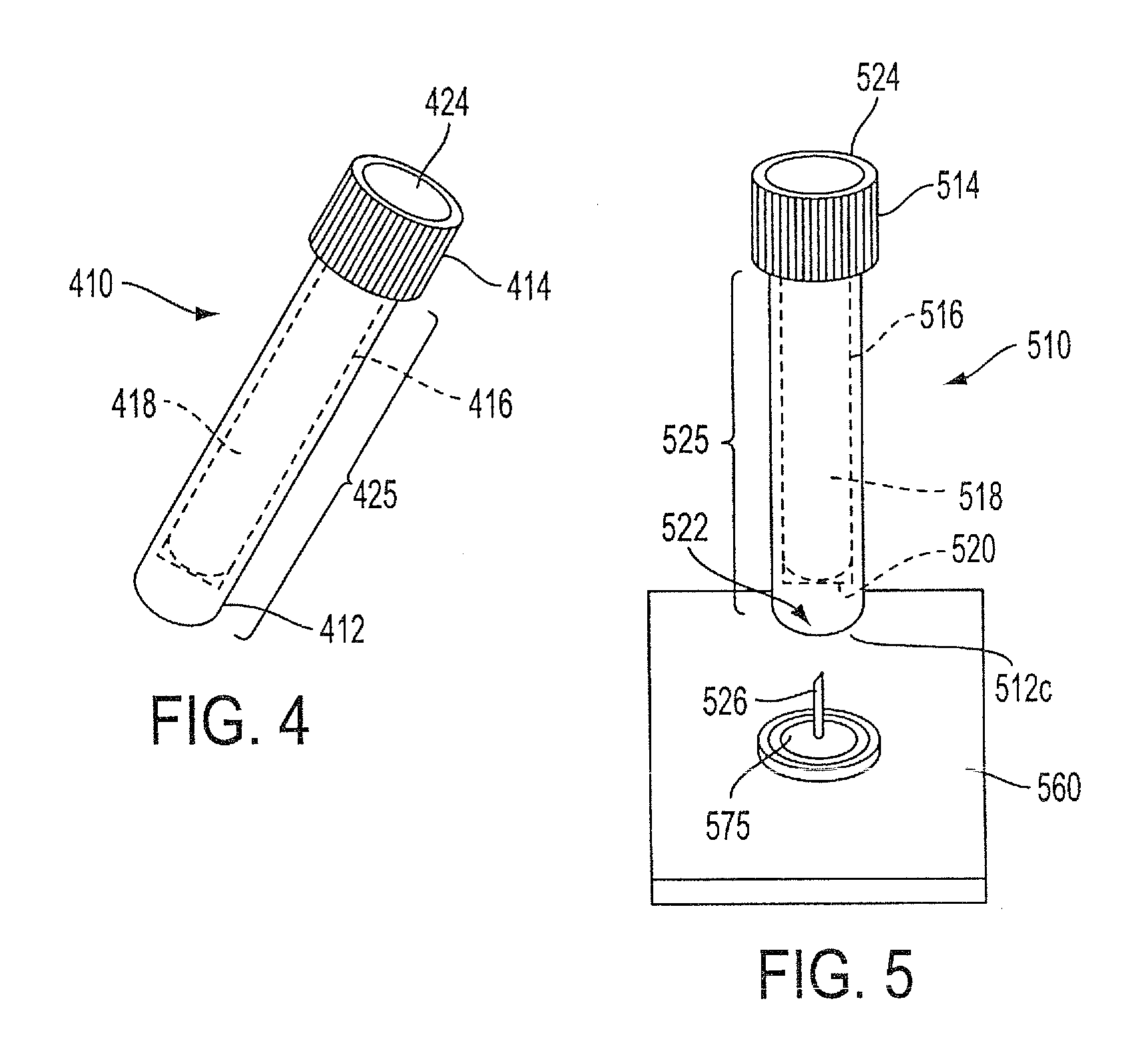Sample collection system and method for use thereof
a sample collection and sample technology, applied in the field of sample collection devices, can solve the problems of limited sample size, general restrictions on the method of invasive collection of biological fluid samples (e.g., drawing blood), and limited sample size, so as to enhance salivation, reduce sample size, and reduce sample size
- Summary
- Abstract
- Description
- Claims
- Application Information
AI Technical Summary
Benefits of technology
Problems solved by technology
Method used
Image
Examples
example i
[0141]Referring now to FIGS. 9, 12 and 13, there is shown testing and data resulting therefrom associated with sample concentration levels produced using traditional sample collection methods (direct draw via pipette) as compared with the sample collection system of the present invention. As demonstrated in the Table of FIG. 9, the average percentage increase of protein concentration obtained by the present invention over the amount obtained using traditional direct draw methods is 220%. Accordingly, the present invention provides a clear advantage over prior art direct draw techniques associated with fluid sample collection.
[0142]A sample collection system of the present invention using CLINICEL™ polyvinyl alcohol sponges is treated with a citric acid buffer-ovalbumin wash before being lyophilized. The purpose is to determine (1) the percentage protein yield of the CLINICEL™ polyvinyl alcohol sponges that are treated with a citric acid buffer-ovalbumin wash, (2) whether the additio...
example ii
[0148]As demonstrated in the Table of FIG. 10, the sample collection system of the present invention using a CLINICEL™ polyvinyl alcohol sponge produced higher sample constituent of interest (protein) concentrations than those produced using Avitar's HYDRASORB™ sponges. In this test, collectors constructed with either a CLINICEL™ polyvinyl alcohol sponge or an Avitar's HYDRASORB™ sponge are used to collect saliva samples. Saliva samples are collected by placing the sponge being tested in the mouth of the test subject. The sponges are left in place for a period of about ten (10) minutes. Next, the sponges are weighed to record the weight of the saliva absorbed. Then the sponges are centrifuged for one (1) hour to release the sample from the collector. Thereafter, the volume of saliva released is recorded. Finally, the protein content of the collected saliva is determined according to Bio-Rad analytical method. The average results for four (4) test sponges of each type are set forth i...
example iii
[0149]The purpose of this experiment is to determine if the CLINICEL™ polyvinyl alcohol sponges and treatment protocol affect protein retention capability.
[0150]12,200 CLINICEL™ polyvinyl alcohol sponges are ordered and treated as follows with 91.5 L of citric buffer-PEG 400 wash. Using an appropriate size clean tank and mixer, approximately 91.5 L of processed water, about 4575 g sodium citrate, about 577.4 g citric acid, about 4.6 g PEG 400 and about 18.3 g methylparaben are mixed together until dissolved at about 5.52 pH. One third of solution is separated into another clean tank for combining with about 6.1 g of ovalbumin. The required quantity of sponges is removed from the freezer and allowed to thaw. This may be done up to 24 hours in advance. Discard any discolored sponges. Squeeze each bag of sponges to remove residual liquid. Filter ovalbumin solution through appropriate 0.2 micron filtration device. Deliver about 0.5 L of filtered ovalbumin solution to each bag of sponges...
PUM
| Property | Measurement | Unit |
|---|---|---|
| concentrated volume | aaaaa | aaaaa |
| diameter | aaaaa | aaaaa |
| diameter | aaaaa | aaaaa |
Abstract
Description
Claims
Application Information
 Login to View More
Login to View More - R&D Engineer
- R&D Manager
- IP Professional
- Industry Leading Data Capabilities
- Powerful AI technology
- Patent DNA Extraction
Browse by: Latest US Patents, China's latest patents, Technical Efficacy Thesaurus, Application Domain, Technology Topic, Popular Technical Reports.
© 2024 PatSnap. All rights reserved.Legal|Privacy policy|Modern Slavery Act Transparency Statement|Sitemap|About US| Contact US: help@patsnap.com










